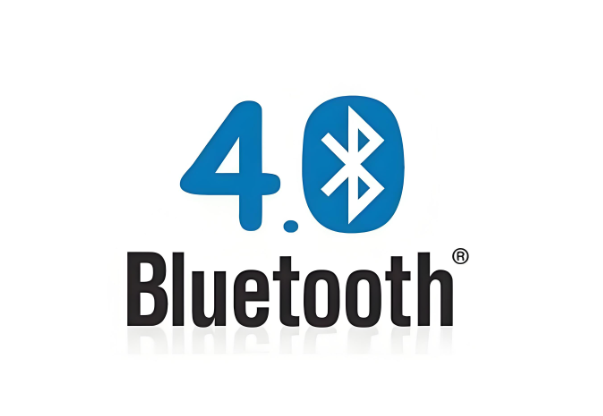Amidst the wave of Industry 4.0 and smart logistics, Real-Time Location Systems (RTLS) have become a core technology for optimizing production processes and improving management efficiency. Traditional GPS, due to poor signal penetration, struggles to meet the demands of indoor scenarios. Furthermore, the limited accuracy of Wi-Fi fingerprint positioning and the high cost of RFID further highlight the bottlenecks of indoor positioning technology. Against this backdrop, Bluetooth 4.0, with its low power consumption, high compatibility, and flexible scalability, has become a key technological breakthrough for RTLS implementation.

Low-Power Design: The Cornerstone for Extended Device Battery Life
The Bluetooth Low Energy (BLE) technology introduced in Bluetooth 4.0 achieves exponential reductions in energy consumption through three major innovations:
Extended Advertisement Interval: Devices can adjust the advertising interval from milliseconds to seconds based on scenario requirements. For example, low-frequency interactive devices like smart keys can reduce power consumption by extending the advertising interval, extending battery life to months or even years.
Simplified Protocol Stack: Redundant functions in traditional Bluetooth are stripped away, streamlining the protocol layers and reducing processing time and energy consumption. BLE retains only core connection and data transmission functions, allowing devices to maintain communication capabilities while reducing power consumption to 1/10 of traditional Bluetooth.
Fast Connection Mechanism: Devices can establish connections and exchange information in milliseconds, then quickly return to a low-power state. This feature is particularly important in industrial scenarios. For example, a brief communication between an AGV and a positioning beacon can report its location, avoiding the high energy consumption of a continuous connection.
This low power consumption allows Bluetooth 4.0 devices to be powered by coin-cell batteries, significantly reducing deployment costs and facilitating large-scale RTLS applications.
RSSI Positioning: Low-Cost Basic Ranging
Bluetooth 4.0 provides low-cost basic positioning capabilities for RTLS through received signal strength indicator (RSSI) technology. This technology compares received signal strength with known beacon locations to estimate the approximate distance between the device and the beacon, and then uses triangulation algorithms to calculate the position.
Although RSSI accuracy is significantly affected by environmental interference, it still has practical value in specific scenarios:
Warehouse Management: By deploying dense Bluetooth beacons, shelf positioning with meter-level accuracy can be achieved, assisting robots in sorting goods.
Personnel Safety: In hazardous areas such as chemical parks, RSSI can monitor the distance between personnel and hazards, triggering early warning mechanisms.
To improve RSSI positioning stability, developers often use the following optimization strategies:
Increasing beacon density: Shortening beacon spacing reduces signal blind spots.
Dynamic parameter calibration: Real-time adjustment of the signal attenuation model based on factors such as ambient humidity and temperature.
Multi-sensor fusion: Combining data from accelerometers, gyroscopes, and other sensors to smooth positioning results using a Kalman filter algorithm.
Compatibility Advantages: Seamless Integration with the Existing Ecosystem
Bluetooth 4.0's backward compatibility and cross-platform support make it the preferred technology for RTLS deployment:
Device Compatibility: BLE 4.0 supports communication with older Bluetooth devices, avoiding hardware waste caused by technology iterations. For example, consumer devices such as smartphones and tablets can directly serve as RTLS master devices, reducing system deployment costs.
Platform Compatibility: Mainstream operating systems such as Android and iOS provide BLE development interfaces, allowing developers to implement device discovery, connection, and data transmission through standardized APIs. For example, the Flutter framework enables cross-platform RTLS application development, shortening development cycles.
Ecosystem Scalability: The universal data format and protocol defined by the Bluetooth SIG ensure interoperability between devices from different manufacturers. For example, Silicon Labs' EFR32BG22 SoC and u-blox's NINA-B41x modules can both connect to the RTLS system through a unified interface.
Technology Evolution: Accuracy Transition from RSSI to AoA
Although Bluetooth 4.0's RSSI positioning had accuracy limitations, its technical architecture laid the foundation for subsequent upgrades. Bluetooth 5.1 introduced Angle of Arrival (AoA) and Angle of Departure (AoD) technologies, which improve positioning accuracy to 0.5 meters using a multi-antenna array and phase difference calculation.
AoA Principle: A positioning beacon transmits a constant frequency extended signal (CTE). The receiving end uses an antenna array to measure the signal phase difference and calculate the angle of arrival. For example, Silicon Labs' BG22-RB4191A evaluation kit integrates a four-antenna array and IQ data preprocessing algorithms, enabling rapid AoA positioning.
AoD principle: A positioning beacon uses multiple antennas to transmit signals, and the receiver uses a single antenna to measure phase differences and infer its own position. This technology is suitable for low-latency scenarios such as robot navigation.
Bluetooth 5.1's direction-finding functionality complements the low-power foundation of Bluetooth 4.0, driving the evolution of RTLS from "coarse positioning" to "precise tracking."
Bluetooth 4.0, with its low power consumption, high compatibility, and flexible scalability, provides a low-cost, easy-to-deploy solution for RTLS. Although its RSSI positioning accuracy is limited, it can meet the needs of most industrial scenarios through technologies such as beacon optimization and multi-sensor fusion. Bluetooth 5.1's AoA/AoD technology further expands the application boundaries of high-precision positioning.